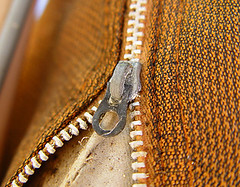 In a previous post, I mentioned that file attachments are something you should avoid. There are times when they are unavoidable. If you must attach a file to an email, Zip it first.
In a previous post, I mentioned that file attachments are something you should avoid. There are times when they are unavoidable. If you must attach a file to an email, Zip it first.
Zip is the generic term for “compress” with a compression program based on PKZip from a company called PKWare. Not many people use the original PKZip any more. There is WinZip and an assortment of free and shareware titles that most people now use. An “unzip” utility is built into Windows, but you will need to install some software in order to create your own zipped files. If you don’t want to spend any money, I recommend 7-zip.
Here is how I explain compression to my students.
Did you ever wonder why all orange juice is labelled 100% pure orange juice – from concentrate? One gallon of OJ is approximately one half orange “stuff” and one half water. In Florida, the water is removed. One truck is used to drive the concentrate to Ohio. In Ohio, the water is added and two truck loads of OJ (from concentrate) are profitted. The savings is in the shipping. It only took one truck to get two truck-loads-worth of OJ to Ohio. With the price of fuel these days, that’s a lot of savings.
File compression “removes” redundencies in files that can be replicated later. The process makes the file smaller for transport or long-term storage. The compression process is complicated to understand (here is a good explanation), but the results are easy to comprehend and benefit from. Compressing a file makes the file smaller. Smaller files can be sent across the Internet faster. This means it will take less time to send and to receive a compressed file.
Be aware that different kinds of files will compress with different efficiencies. Some files (like Word documents) will compress down to 10% of the original size. A picture in JPEG format may only compress to 95% of the original size. Depending on the type of file you compress, your mileage may vary.
There is one other important benefit to compression. All the zip utilities let you place multiple files into one zip “package”. So instead of attaching twenty different pictures to an email, all twenty pictures can be placed inside one zip file. The one zip file can be sent. The recipient can unzip the file and get all twenty pictures.
That said, it is important to note that zipped files are only for transport and archiving. To use the contents of a zip file, you must first unzip it.
TSPY=2.12

1 Response to Efficiency Tip #69 – Zip